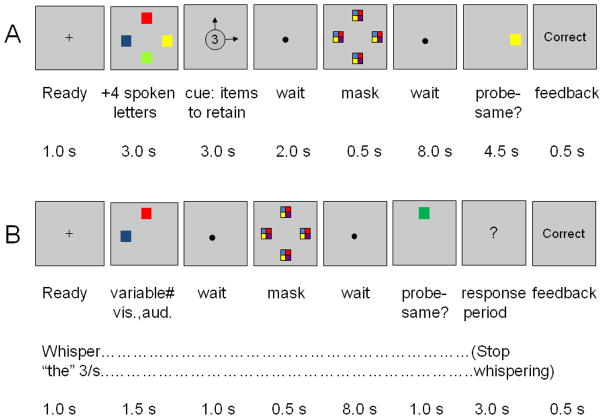Figure 1.
Procedure in two fMRI experiments on intersensory working memory. (A) Experiment 1. Four colored squares and four spoken letters were presented on each trial and a subsequent cue indicated which ones to retain. The cue arrows pointed to the colored squares to be retained and a series of two digits indicated the serial positions of spoken letters to be retained; when no letters were to be retained, two asterisks were presented instead. After a post-perceptual mask and an 8-s blank period a probe item, a color or letter, was to be judged present or absent from the memoranda. When the probe was a color, it appeared in the same location as an array item and was the same color as that item or was a color not found in the array. When the probe was a letter (not shown), it was printed in the center of the screen. (B) Experiment 2 differed from the first experiment in several ways. All presented stimuli were to be remembered and included two colored squares, two spoken letters, two of each, or four colored squares. The probe was a color, located as in the first experiment, or a spoken letter (not shown). Participants in this experiment whispered “the” repeatedly during the presentation to suppress verbal rehearsal.

